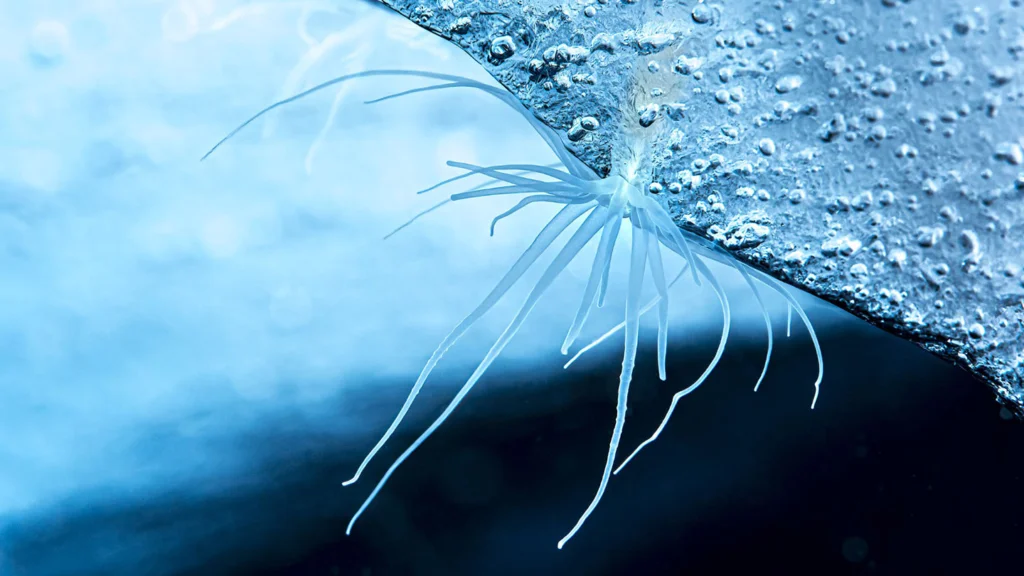Why Is the Scientific Community Concerned About Strange Antarctic Species!
In an exciting new discovery, researchers from William & Mary’s Virginia Institute of Marine Science (VIMS) have identified a brand-new species of Antarctic dragonfish. Named Akarotaxis gouldae or the Banded Dragonfish, this species was found in the icy waters off the western Antarctic Peninsula. The discovery has sparked both excitement and concern, as it highlights the fragility of the marine ecosystem and the continued ability of our planet’s oceans to surprise scientists.
A Mysterious Creature in a Remote Location
The Banded Dragonfish, a type of deep-sea fish, is especially intriguing because of how little we know about it. According to the research team, this species is “especially poorly known,” primarily due to its deep habitat and the rarity of its appearance. The team explains that the fish’s deep, isolated habitat under glaciers makes it difficult to study, and very little is known about its biology and life cycle.

The team’s discovery is particularly remarkable because the species was first mistaken for another known dragonfish, Akarotaxis nudiceps. However, after collecting DNA samples from various fish species around the world and conducting genetic analysis, they determined that this was an entirely new species—Akarotaxis gouldae.
How They Made the Discovery: Genetic Clues
Lead researcher Andrew Corso and his team discovered the new dragonfish species while trawling the icy waters of Antarctica in search of zooplankton. Initially, they believed they had encountered a known species, but further investigation revealed significant genetic differences, confirming that this was a previously unidentified species.
“We hypothesize that a population of dragonfishes may have become isolated within deep trenches under glaciers, surviving on food pushed in by the moving ice,” Corso explained. This separation likely happened when glaciers retreated, and the subpopulation became distinct enough to no longer be able to reproduce with the original species.

A Vulnerable Species with a Small Range
One of the most concerning findings about Akarotaxis gouldae is its extremely limited range. As Corso notes, “Akarotaxis gouldae appear to have one of the smallest ranges of any fish endemic to the Southern Ocean.” This means that they are only found in a very specific part of the ocean, making them especially vulnerable to environmental changes.
Additionally, the dragonfish has a low reproductive capacity, which limits the potential for population growth. Early life stages of this species are found in shallower waters, which could make them even more susceptible to changes in their environment. Corso warns that this limited range, combined with low reproduction rates, puts the species at high risk.
Threats from Rising Temperatures and Fisheries
The environment around the western Antarctic Peninsula is warming rapidly, which poses a significant threat to the delicate ecosystem. Akarotaxis gouldae is just one of many species that are affected by the rising temperatures and changing conditions in the Southern Ocean.

The waters surrounding the Peninsula are also used by the international Antarctic krill fishery. Krill is a primary food source for many marine species, and the increasing demand for krill, especially by commercial fisheries, could further disrupt the local food web. Since Akarotaxis gouldae is prey to several larger species, any decline in those predators could create a ripple effect, further threatening the fish and other marine life in the region.
A Critical Discovery for Conservation
The discovery of Akarotaxis gouldae serves as a reminder of the fragility of the Antarctic marine ecosystem and the urgent need to protect it. The species’ low numbers and limited habitat make it particularly vulnerable to both natural and human-made threats. The rise in ocean temperatures, along with the increasing exploitation of marine resources like krill, could push this species—and many others—toward extinction.
Conservation efforts are crucial in ensuring that species like the Banded Dragonfish continue to thrive. Protecting their natural habitat and addressing the impacts of climate change are key to preserving the delicate balance of life in the Southern Ocean.

Conclusion: A New Species, A New Concern
The discovery of Akarotaxis gouldae shines a light on the mysterious and ever-changing world beneath the Antarctic waters. While it’s an exciting find for the scientific community, it also serves as a stark reminder of the challenges facing the region’s fragile ecosystem. As temperatures rise and human activity increases, species like the Banded Dragonfish could face serious threats, making conservation efforts more important than ever before. The oceans of Antarctica continue to surprise us, but this new discovery also brings a renewed sense of urgency to protect these vulnerable marine environments.







